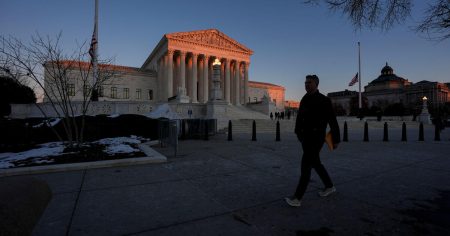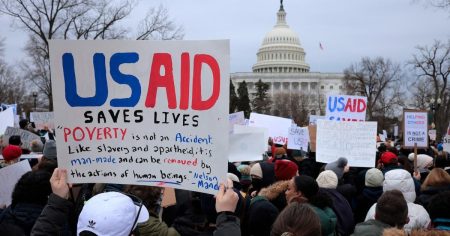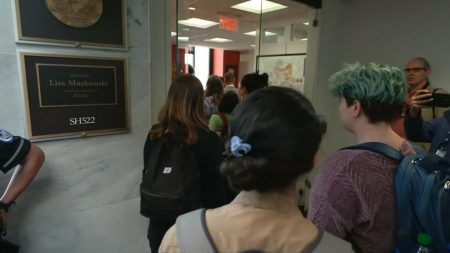DHS Announces Significant Workforce Reduction
In a recent announcement, the Department of Homeland Security (DHS) revealed a workforce reduction of 405 employees. This decision marks a significant step in the department’s efforts to streamline operations and address what it describes as decades of inefficiency and wasteful spending. The cuts were made across various components of DHS, with the largest reductions occurring at the Federal Emergency Management Agency (FEMA) and the Cybersecurity and Infrastructure Security Agency (CISA). FEMA saw over 200 employees affected, while CISA experienced a reduction of 130 personnel. Additionally, U.S. Citizenship and Immigration Services (USCIS) saw fewer than 50 employees impacted, and the DHS Science and Technology Directorate lost 10 positions.
Breakdown of Job Cuts Across Agencies
The cuts at FEMA and CISA are particularly notable given the critical roles these agencies play in national security and emergency response. FEMA, responsible for coordinating disaster relief and recovery efforts, has been a lifeline for countless Americans affected by natural disasters. The reduction in its workforce raises concerns about the agency’s capacity to respond effectively to future crises. CISA, which focuses on protecting the nation’s critical infrastructure from cyber threats, also faces challenges in maintaining its operational efficiency with fewer staff members.
Meanwhile, USCIS, which handles immigration and citizenship services, saw minimal reductions, with fewer than 50 employees affected. The DHS Science and Technology Directorate, responsible for driving innovation in homeland security technologies, lost 10 positions. Additionally, 12 Coast Guard members working on diversity, equity, and inclusion initiatives were impacted by the reduction in force. These individuals, all based in Washington, D.C., were offered the opportunity to support border security efforts at the southwestern border and are currently on administrative leave.
The Human Impact of the Layoffs
The layoffs have significant implications for the employees affected and the communities they serve. For many, these job cuts mean uncertainty about their future and the potential loss of their roles in critical national security and emergency response efforts. The reduction in force also raises questions about how DHS will maintain its operational capabilities, particularly in areas as crucial as disaster response and cybersecurity.
One individual directly affected by FEMA’s work is Lucy Bickers, a resident of Swannanoa, North Carolina, who received assistance from the agency after Hurricane Helene damaged her property. Bickers, who expressed her support for FEMA, highlights the vital role the agency plays in helping Americans recover from disasters. The layoffs at FEMA could potentially hinder the agency’s ability to provide such support in the future, leaving communities more vulnerable during times of crisis.
The Reasoning Behind the Cuts
According to a DHS spokesperson, the layoffs are part of a broader effort under President Trump’s leadership to eliminate what the administration describes as "egregious waste and incompetence" within the federal government. The spokesperson emphasized that the cuts are intended to save taxpayer dollars and increase accountability by eliminating non-mission critical positions. Specifically, the personnel affected were identified as non-mission critical and were in probationary status. DHS has also stated that it is actively identifying other wasteful positions and offices that do not align with the department’s core mission.
The spokesperson highlighted that the layoffs will result in approximately $50 million in savings for American taxpayers. While this figure represents a fraction of the overall DHS budget, the administration argues that these cuts are part of a larger effort to reform the federal government and make it more efficient. The spokesperson also emphasized the importance of cutting red tape and improving accountability within the department.
Employee and Public Response
The layoffs have met with mixed reactions from employees, unions, and the public. While some support the administration’s efforts to streamline government operations and reduce waste, others have expressed concern about the potential impact on national security and disaster response capabilities. The reduction in force has also raised questions about the long-term effects on employee morale and retention, particularly in agencies that play critical roles in protecting the nation.
The response from the public has been equally divided. Some taxpayers applaud the effort to cut costs and increase government efficiency, while others worry about the potential consequences of reducing the workforce in such vital areas as disaster response and cybersecurity. The layoffs have also sparked debates about the balance between fiscal responsibility and maintaining the necessary resources to protect the nation and its citizens.
Conclusion and Moving Forward
In conclusion, the DHS workforce reduction of 405 employees marks a significant shift in how the department operates under President Trump’s leadership. While the administration argues that these cuts are necessary to eliminate waste and improve efficiency, the layoffs raise important questions about the long-term impact on national security, disaster response, and cybersecurity efforts. As DHS moves forward, it will be critical to ensure that these reductions do not hinder the department’s ability to fulfill its core mission of protecting the American people.
The layoffs also highlight the ongoing debate over the size and role of the federal government. While some see the cuts as a step in the right direction toward greater accountability and fiscal responsibility, others worry about the potential consequences of reducing the workforce in such critical areas. As the nation continues to grapple with challenges ranging from natural disasters to cyber threats, the effectiveness of these cuts will be closely watched in the months and years to come.















